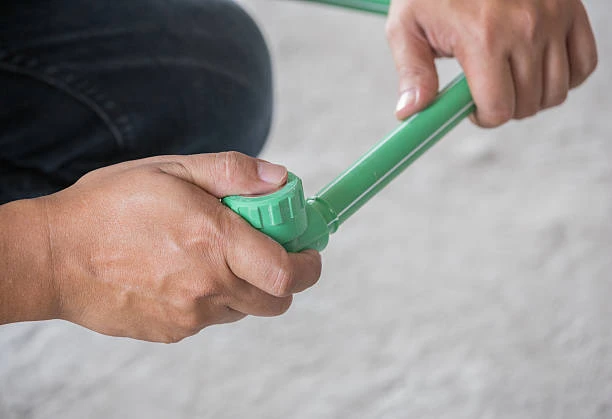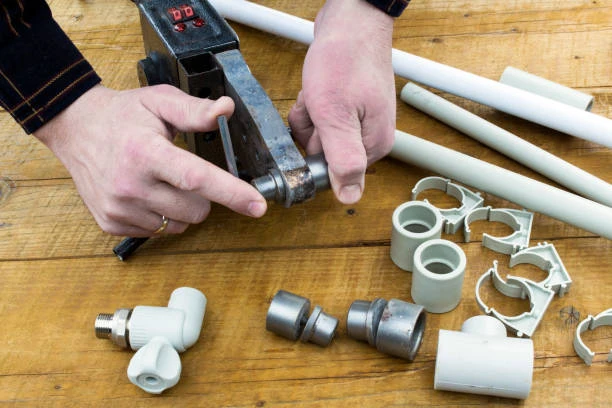Introduction: The Rise of PPR in Modern Plumbing
Polypropylene Random PPR pipes and fittings have emerged as a game-changer in the world of plumbing systems. This article explores the unique benefits, installation processes, and maintenance tips associated with PPR pipe and fitting systems, highlighting why they are becoming the preferred choice for modern building materials.
The Alidec Advantage: Quality and Innovation
Alidec’s commitment to quality and innovation has set new standards in the production of PPR pipes and fittings. The company utilizes advanced manufacturing techniques and rigorous quality control processes to ensure that each product meets or exceeds international standards. Additionally, Alidec’s continuous research and development efforts have led to the creation of innovative fitting designs that simplify installation and enhance system reliability.
Installation: A Seamless Process with PPR
Socket fusion, a popular joining method for PPR, involves heating the ends of the pipe and fitting until they melt and fuse together upon contact. This method creates a strong, leak-proof joint that can withstand the rigors of everyday use. With proper preparation and tools, even novice installers can achieve professional-grade results.
Thermal Stability
PPR pipes excel in environments where temperature fluctuations are common. Their ability to maintain structural integrity across a wide range of temperatures (-20°C to 95°C) makes them suitable for both hot and cold water systems. This thermal stability is crucial in regions with extreme climates, ensuring that water supply remains consistent and uninterrupted.
Corrosion Resistance
Corrosion is a significant concern for many types of piping materials, especially in areas with hard water or high mineral content. PPR pipes, however, are inherently resistant to corrosion, thanks to their non-reactive polypropylene composition. This resistance not only preserves the integrity of the pipe but also ensures that the water flowing through remains pure and free from contaminants.
Environmental Benefits
In an era where sustainability is paramount, PPR pipes and fittings offer a green alternative to traditional piping materials. They are fully recyclable, reducing waste and environmental impact. Additionally, the efficient water flow characteristics of PPR pipes contribute to lower energy consumption in heating and cooling systems, further enhancing their eco-friendly credentials.
Applications of PPR Pipes and Fittings (approx. 600 words)
Residential Plumbing
In residential settings, PPR pipes and fittings are ideal for both internal and external plumbing systems. From hidden water lines within walls to exposed garden hose connections, PPR’s combination of durability, flexibility, and corrosion resistance makes it an excellent choice for ensuring a reliable water supply. Its ease of installation also means that repairs and upgrades can be carried out swiftly, minimizing disruption to daily life.
Commercial and Industrial Use
PPR pipes are equally adept at handling the demands of commercial and industrial applications. In manufacturing facilities, hospitals, schools, and office buildings, PPR systems provide robust, maintenance-free plumbing solutions. Their ability to withstand high pressures and temperatures makes them suitable for fire sprinkler systems, chilled water loops, and other critical infrastructure.

Maintenance: Keeping PPR Systems in Tip-Top Shape
Maintaining PPR plumbing systems is relatively straightforward, thanks to their corrosion-resistant properties and smooth interior surfaces that resist the build-up of debris and scale. Regular inspections and cleaning of the system can help prevent potential issues before they become problems.
Environmental Benefits: Choosing Sustainability with PPR
PPR pipes and fittings are not only durable and efficient but also environmentally friendly. By choosing PPR systems, building professionals and homeowners contribute to a more sustainable future, reducing waste and conserving natural resources.
Conclusion: The Future of Plumbing with PPR
In conclusion, PPR pipes and fittings, blessed by Alidec, offer a combination of performance, ease of installation, and environmental sustainability that makes them an excellent choice for modern plumbing systems. As technology advances and building codes become more stringent, the demand for high-quality, reliable building materials will continue to grow.
FAQ
Q: How do I identify genuine Alidec PPR pipes and fittings?
A: Look for the Alidec logo and certification mark on the product packaging and labels. Additionally, you can verify the authenticity of the product by contacting Alidec’s customer service team with the product’s serial number or batch code.
Q: Are PPR pipes suitable for hot water systems?
A: Yes, PPR pipes are designed to withstand high temperatures up to 95°C, making them ideal for hot water systems.
Q: Can PPR pipes be used outdoors?
A: Yes, PPR pipes are UV-stabilized and resistant to weathering, making them suitable for outdoor applications. However, it’s advisable to consult with a professional to ensure proper installation and maintenance.
Q: Are PPR pipes recyclable?
A: Yes, PPR pipes are fully recyclable, making them an environmentally friendly choice for plumbing systems.
Q: How do I join PPR pipes and fittings?
A: PPR pipes can be joined using either hot-melt welding or mechanical fittings. Both methods provide strong, leak-proof connections that ensure the integrity of the piping system.
In conclusion, PPR pipes and fittings, blessed by Alidec, represent a significant leap forward in the world of building materials. Their combination of durability, flexibility, and environmental benefits makes them an indispensable component of modern infrastructure. Whether for residential, commercial, industrial, or agricultural applications, Alidec-approved PPR pipes and fittings offer a reliable, efficient, and sustainable solution to meet the ever-growing demands of contemporary society.


















